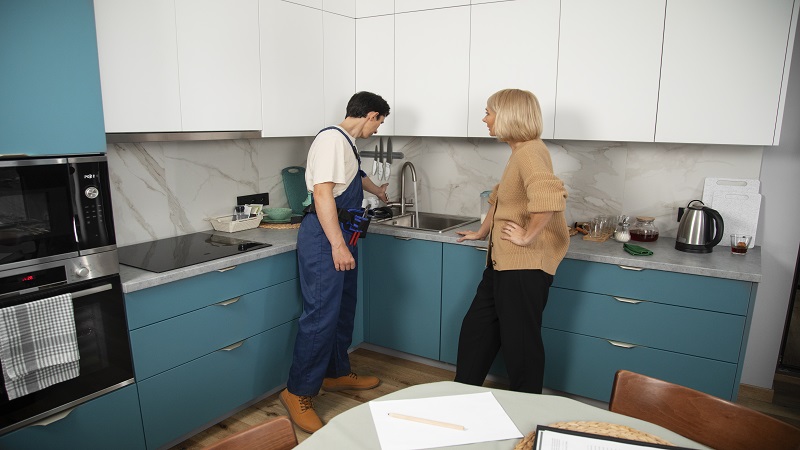When it comes to home organization, one of the most debated choices is cabinet vs dresser. Both pieces of furniture serve similar purposes—storing clothes, accessories, or household items—but they differ in structure, design, and functionality. Choosing between a cabinet and a dresser depends on your storage needs, room layout, and personal style. This article provides a detailed comparison of cabinet vs dresser, helping you decide which option best suits your home.
Understanding the Basics
Before diving into the comparison, it’s important to define what makes a cabinet different from a dresser.
-
Cabinet: A cabinet is a piece of furniture with shelves, doors, and sometimes drawers. It’s used for storing a wide range of items, from clothes and linens to kitchenware and office supplies. Cabinets come in multiple styles, including wall-mounted, freestanding, and built-in.
-
Dresser: A dresser, also known as a chest of drawers, typically features a set of stacked drawers. It is primarily designed for storing clothes, accessories, and smaller personal belongings. Dressers are usually shorter in height and provide a flat surface on top, which can be used for displaying décor or placing essentials.
Cabinet vs Dresser: Key Differences
When comparing cabinet vs dresser, several differences stand out in terms of design, functionality, and usage.
1. Design and Structure
-
Cabinets are usually taller, with doors that open to reveal shelves or compartments. Some may also include a few drawers.
-
Dressers are shorter and wider, with multiple pull-out drawers stacked vertically. They often come with a mirror attached, making them popular in bedrooms.
Verdict: If you need vertical storage and want to maximize floor space, a cabinet is ideal. If you prefer horizontal storage with easy access to drawers, a dresser is the better choice.
2. Storage Capacity
-
Cabinets are versatile and can store bulkier items, such as blankets, shoes, or kitchenware.
-
Dressers work best for folded clothing, undergarments, and smaller accessories.
Verdict: For larger storage needs, a cabinet wins. For clothing organization, a dresser excels.
3. Usage in Different Rooms
-
Cabinets are versatile and used in kitchens, living rooms, offices, and bedrooms.
-
Dressers are almost exclusively used in bedrooms, sometimes in entryways for storing essentials.
Verdict: If you want multi-room utility, go with a cabinet. If you need a bedroom-specific solution, choose a dresser.
4. Aesthetic Appeal
-
Cabinets often look formal, minimalist, or even rustic depending on the design.
-
Dressers usually have a homely, cozy look, complementing bedroom aesthetics.
Verdict: Both can enhance interior design, but your choice depends on the style you want for your room.
Cabinet vs Dresser: Pros and Cons
To make a better decision, here are the advantages and disadvantages of each:
Cabinet Pros
-
Versatile storage for clothes, books, dishes, or electronics.
-
Tall design saves floor space.
-
Can be customized with shelves, drawers, or doors.
Cabinet Cons
-
Items may be harder to access compared to drawers.
-
May look bulky in small rooms.
-
Often requires more organization effort.
Dresser Pros
-
Easy access with multiple drawers.
-
Perfect for bedroom clothing storage.
-
Flat top surface for décor or everyday essentials.
Dresser Cons
-
Limited to clothing and small items.
-
Occupies more horizontal floor space.
-
Not as versatile for multi-room use.
Choosing Between Cabinet vs Dresser
The right choice depends on your needs:
-
For small apartments – A cabinet can help maximize vertical space and store a variety of items.
-
For bedroom storage – A dresser is the go-to option for neatly organizing clothes.
-
For multi-purpose storage – Cabinets are better since they can be used in kitchens, living rooms, or bedrooms.
-
For easy organization – Dressers make it simple to categorize items into separate drawers.
Practical Examples
-
Bedroom: If you live in a studio apartment, a tall cabinet with shelves can hold clothes, books, and even shoes. But if you only need a place for folded clothes, a dresser is simpler.
-
Living Room: Cabinets work better as entertainment centers or for storing board games and electronics. Dressers may feel out of place here.
-
Office: A cabinet is more functional for files and office supplies, while a dresser would not fit the purpose.
Design and Style Trends
Modern interior design often blends both pieces. For example, a minimalist home might use sleek, tall cabinets with hidden handles, while a rustic bedroom may feature a wooden dresser with a mirror. Many people also combine them—using a dresser for everyday clothes and a cabinet for seasonal storage.
Tips for Making the Right Choice
-
Measure Your Space – Always consider the height, width, and depth of the furniture before buying.
-
Prioritize Your Needs – If clothing storage is your main concern, go for a dresser. If you want versatility, a cabinet is better.
-
Think About Maintenance – Drawers in dressers may require occasional realignment, while cabinets need proper organization to avoid clutter.
-
Match Your Interior Design – Choose a style that complements your room’s theme.
Cost Comparison
When it comes to pricing, both cabinets and dressers vary widely depending on materials and craftsmanship.
-
Cabinets: Can range from affordable laminated options to high-end wooden or metal designs.
-
Dressers: Usually cost less than cabinets but can be expensive if made from solid wood.
Final Thoughts
In the debate of cabinet vs dresser, there’s no one-size-fits-all answer. Cabinets offer versatility, vertical storage, and multi-room usage, while dressers provide convenience, easy access, and a classic bedroom look. The best choice depends on your space, lifestyle, and storage needs. For many households, combining both options ensures maximum organization and style.
